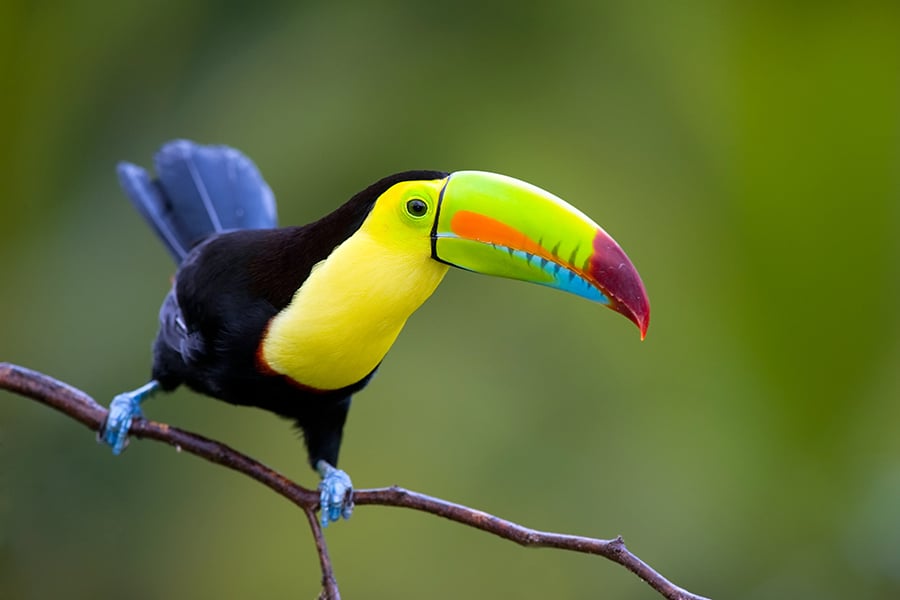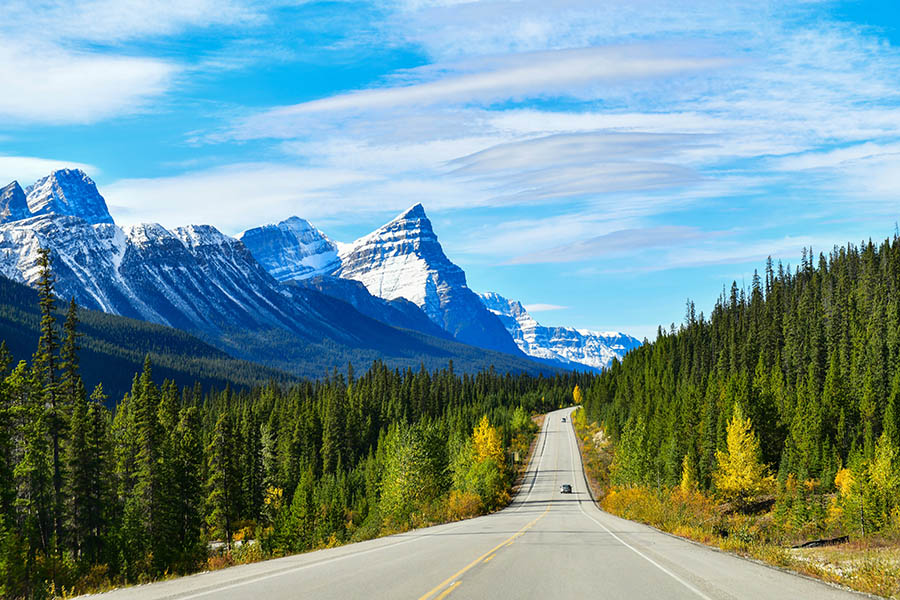
Error message
Could not retrieve the oEmbed resource.Driving across Australia: Darwin to Uluru
Before I visited Australia, the Outback hadn’t been high up on my bucket list, but I’m so glad I finally decided to include a Northern Territory road trip in my plans.
This vast, wild and rugged area offers spectacular wildlife, dry-cracked red earth, clear blue skies and nights spent under a blanket of endless stars. Driving across Australia you’ll sense the immense feeling of freedom this wide open landscape promises and you’ll see how easy it is to drive here. The Northern Territory is also home to the Red Centre, the spiritual heart of Australia and home to the magical Uluru – a deeply significant place for Aboriginals.
[[{"fid":"378561","view_mode":"article_image_full_width","fields":{"format":"article_image_full_width","field_file_image_alt_text[und][0][value]":"Uluru is a must-see!","field_file_image_title_text[und][0][value]":"Uluru is a must-see!","field_file_country[und]":"AU","field_file_tags[und]":"uluru, red centre"},"type":"media","field_deltas":{"1":{"format":"article_image_full_width","field_file_image_alt_text[und][0][value]":"Uluru is a must-see!","field_file_image_title_text[und][0][value]":"Uluru is a must-see!","field_file_country[und]":"AU","field_file_tags[und]":"uluru, red centre"}},"attributes":{"alt":"Uluru is a must-see!","title":"Uluru is a must-see!","height":"520","width":"780","class":"media-element file-article-image-full-width","data-delta":"1"}}]]
Start in the north or the south?
We planned to start our Australia road trip at the top of the Northern Territory and drive south from Darwin, the tropical Top End capital to Uluru (Ayers Rock) in the Red Centre; beginning with Litchfield and Kakadu National Parks, then down to Katherine Gorge before making our way to Alice Springs and the Red Centre. We decided to hire a 4WD campervan and found that there are plenty of campsites and motels along the way.
Another option is to drive up from the south. You could begin in Adelaide in South Australia and drive via Port Augusta and the extraordinary town of Coober Pedy (the Opal mining capital of the world). Here many residents prefer to live in caves underneath hillsides (protecting themselves from the heat of harsh summers) and you can stay overnight in a former mine.
Beginning in Darwin
We flew into Darwin, which is well-connected to every state in Australia, so domestic flights are simple. You can also arrive on an international flight via Singapore (4.5 hours) or Bali, Indonesia (2.5 hours).
Litchfield National Park
Darwin to Litchfield: 71 miles/1.5 hour’s drive
After spending a few days in Darwin and exploring the surrounds we picked up our campervan and drove south to Litchfield National Park. Here you can cool down in the many waterfalls like Wangi Falls or swimming holes like Buley Rockhole.
Be sure to check the local signs before going for a swim, or to speak to a ranger before you jump into the water. Litchfield, as well as everywhere else is very well sign posted, so you’ll know exactly where you can and cannot swim if there are crocs about, so there's no need to worry.

Kakadu National Park
Litchfield to Kakadu: 121 miles/2 hour’s drive
If you’ve never seen crocodiles in the wild, you’re guaranteed to see them here in Australia's largest national park. We took a sailing trip on a small boat along the East Alligator River to fish for Barramundi and of course to spot crocodiles. We saw so many big “salties” (saltwater crocodiles) – an amazing experience we won’t forget.
In Kakadu, there are plenty of organised boat tours that we can arrange for you, either on the South Alligator River or the Yellow Water Billabong. Your tour guide will usually be a local, indigenous guide who can point out all of the native wildlife that includes kangaroos, wallabies, dingoes, flying-fox bats and a diversity of birds.
Another highlight of our outback experience was visiting Ubirr, a region within Kakadu National Park which is home to a great many Aboriginal rock paintings, some of which are many thousands of years old. If you visit with an indigenous guide, they will be able to interpret the art and explain its meaning and significance to the local Aboriginal people. It’s worth knowing that during the road to Ubirr is low-lying and during tropical summer (January – March) it can flood, so you might not be able to reach it by road, but other parts of the park are still accessible.
Another place to visit if you have your own transport (you’ll need a 4WD vehicle) is Jim Jim Falls – a hugely spectacular waterfall that plunges over 250m. Visiting these falls is a question of timing too, since during the rainy season (January - March) the falls are at their most impressive, but the road to reach them is impassable, so I’d recommend a scenic flight as the best way to experience them at that time of year. In the dry season, they’re accessible but drying up. We offer this small group tour to Kakadu which includes Jim Jim Falls.

Photo credit: Tourism NT
Nitmiluk (Katherine) Gorge
Kakadu to Katherine Gorge: 79 miles/1.5 hour’s drive
The next stop is Katherine Gorge in Nitmiluk National Park. Katherine Gorge is also a route stop on The Ghan; the train that runs from Darwin via Alice Springs all the way to Adelaide – so this is another alternative for exploring here. Either way, you’ll have the opportunity to explore this spectacular area by foot, by canoe or even by helicopter.
If you’re camping, Nitmiluk Gorge Caravan Park is close to the entrance to the gorge and offers barbecue areas and a pool. Equally close is Cicada Lodge. At night, you can relax under starlight and listen to the sounds of bush and the many crickets. If you’re keen to see kangaroos in the wild, you’re in a good place here – we saw several. It is a very beautiful experience to see them wild.
Before you join the Stuart Highway heading south, I recommend you check out the township of Katherine or go and visit Top Didj for a cultural experience, then take a dip in the Katherine Hot Springs.

Alice Springs
Katherine Gorge to Alice Springs: 750 miles/allow 3-4 days to drive
The long distance between Katherine and Alice Springs means you need to take your time, especially if you’re to avoid driving at dusk or in the evening when there is an increased risk of hitting wild animals. (It’s worth remembering that many rental vehicles will not be insured if you drive them after dusk in Australia).
Although the area is very sparsely populated, I can recommend stopping over few places; Newcastle Waters is a ghost town and former gathering place for cattle drovers and the ‘Devils Marbles’ (Karlu Karlu) just south of the amazing Tennant Creek are one of the Northern Territory’s geological wonders – they are huge, spectacular, granite boulders scattered across a wide valley. You could also stop in at the a road house with an ‘outer space’ feel called Wycliffe Well, the self-proclaimed UFO capital of Australia or visit the quirky Daly Waters Pub in Daly Waters.
The Red Centre
The Red Centre of Australia is named for the glowing, reddish soils and rocks which are created by oxidised iron. This region includes the town of Alice Springs, the West MacDonnell Ranges (Tjoritja) National Park, Kings Canyon and Uluru-Kata Tjuta National Park.
Alice Springs and surrounds
Many people stay for a couple of nights in Alice Springs and start their excursions to Uluru from here. But don’t underestimate distances, the journey from Alice Springs to Ayers Rock is a 5 hour drive!
Alice Springs isn’t a big city but it’s lively and has an eclectic array of galleries as well as a strong reputation for Aboriginal artwork. You can stroll around and shop for souvenirs or clothes or visit a café, restaurant or pub. You can also discover the Kangaroo Sanctuary or the Reptile Centre, join a camel trek with a mountainous backdrop, bike ride to Simpsons Gap or bushwalk in the surrounds.

Uluru-Kata Tjuta National Park
Uluru (Ayers Rock)
Given the distance from Alice Springs, we stayed overnight at a campground about 20km away from Uluru. The campground is within the Ayers Rock Resort and offers good facilities.
As we drove to Uluru in the early morning, we witnessed how the moon slowly disappears behind The Olgas before catching a spectacular sunrise above Uluru – a truly unforgettable experience! Uluru is famous for its spectacular sunrises and sunsets, but when the rock changes colour in front of you and you see it in person you’ll be mesmerised by its serene and stunning colour changes.
There are so many different ways to explore Uluru and get a different perspective on this monolithic rock. You could go trekking on foot or by camel, or for a spectacular aerial perspective, take a helicopter ride, scenic flight or even a hot air balloon ride – all of which we can organise for you.

Kata Tjuta (The Olgas)
Just a 30km drive west from Uluru, you’ll see an impressive set of rock formations or domes, known as Kata Tjuta (The Olgas), which I also recommend visiting.
There are two walks that will take you between the Olgas; the ‘Walpa Gorge’ (2.6km) or the ‘Valley of the Winds’ (7.4km). If you feel less adventurous, you can simply relax and take in the panoramic view from one of the rest stops and vantage points.

Kings Canyon
Before travelling to Australia, I think I had mainly associated ‘the Outback’ purely with Uluru, so the spectacular beauty of the steep-sided sandstone cliffs of Kings Canyon took me completely by surprise.
The 3-4 hour (6km) Canyon Rim Walk is a popular route that begins with a steep climb of 500 steps(!) up to the top of the canyon. We did it on our own, but I think you’d get more value by walking with a guide who will make sure you don’t miss any of the hidden gems.
The trek route continues all along the edge of the canyon and includes a trip to the ‘Garden of Eden’ (a lush green waterhole) and the ‘Lost City’ (A series of sandstone domes). We started early in the morning so that we could avoid the midday sun and I have to say that catching the sunrise was well worth it – this is a very enjoyable trek.
If you’re looking for a shorter route, you can try and easier walk along the creek bed of the canyon which leads you up to a viewing platform.

Interested in driving across Australia to the Red Centre?
If you’d like to explore Australia’s outback, we’re here to help. We’ll show you how to include Darwin, Alice Springs or Uluru in your multi-stop Australia ticket. We can also tailor-make any arrangements, including the route of your road trip, or book your train journey on board The Ghan. If you’re interested in group travel, we offer a number of small group trips that take your off the beaten track, with a local guide.
We can also show you how to twin a visit to the Northern Territory with other destinations in Australia, or perhaps the beaches of Bali? To start planning your trip – simply call us on 1273 320 580 or request a quote by email.

3 Darwin day tours that are worth leaving the city for

Becky Yates
Travelling friend
at Travel Nation

5 Reasons to fall in love with the Australian Outback: the Northern Territory

Grainne Sheffer
Senior Travel Consultant
at Travel Nation

Last trip:
Hong Kong
Next trip:
Costa Rica
More from
Tanja...
















